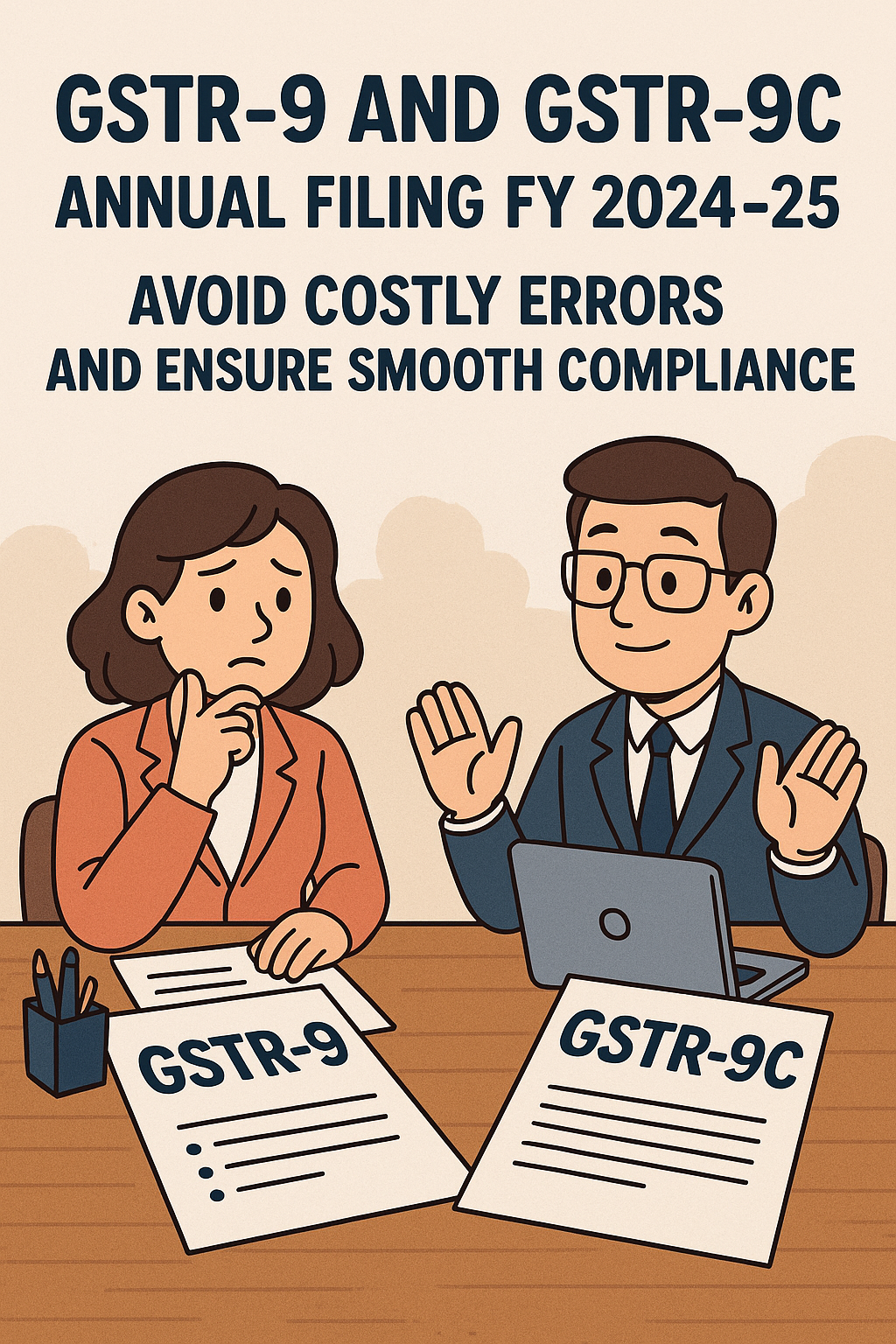GSTR-9 And GSTR-9C are important annual compliance forms under GST. Every regular taxpayer must file them once the financial year ends. These forms cover your yearly business summary – sales, purchases, ITC claimed, tax paid, and reconciliations.
Table of Contents
What is GSTR-9?
GSTR-9 is an annual return under Section 44 of the CGST Act, 2017. It provides a complete summary of all GST transactions during the year.
Who Needs to File:
- All regular GST-registered taxpayers
Who Doesn’t File:
- Composition taxpayers (previously GSTR-9A, now discontinued)
- Input Service Distributors (ISD)
- Non-resident taxable persons
- TDS/TCS deductors
What It Contains:
- Yearly details of sales (B2B, B2C, exports)
- Tax paid under CGST, SGST, IGST, and cess
- ITC availed, reversed, or lapsed
- Amendments in invoices
- HSN-wise summary of inward and outward supplies
What is GSTR-9C?
GSTR-9C is a reconciliation statement and audit certification required for businesses having turnover above ₹5 crore. It must be certified by a Chartered Accountant or Cost Accountant.
It compares:
- Figures reported in GSTR-9
- With figures from audited books of accounts
What It Includes:
- Turnover reconciliation
- ITC reconciliation
- Tax liability reconciliation
- Auditor’s certification
Due Date for Filling GSTR-9 & GSTR-9C For FY 2024–25
As per current GST rules, the due date for both GSTR-9 and GSTR-9C is:
- 31st December 2025
Note: The due date may be extended by the government, so keep checking the official GST portal.
Relevant GST Sections and Rules
- Section 44 of the CGST Act – Annual return (GSTR-9 and 9C)
- Rule 80 of the CGST Rules – Filing conditions for GSTR-9 and 9C
- Section 47 – Late fee for delay in filing GSTR-9
- Earlier Section 35(5) – GST audit (now removed, but still referred)
Tips to File GSTR-9 And GSTR-9C Correctly
- Reconcile GSTR-3B, GSTR-1, and books of accounts. Mismatches may lead to notices.
- Report only the ITC that was actually claimed in GSTR-3B. No fresh ITC allowed.
- Mention all credit notes and debit notes issued during the financial year.
- Prepare the HSN code summary correctly with proper 4-digit or 6-digit codes.
- Use the offline utility available on the GST portal for easier data upload.
- Get the reconciliation and certification from a CA (if your turnover exceeds ₹5 crore).
- File nil GSTR-9 even if you had no business transactions.
Late Fee and Penalties
If GSTR-9 is not filed on time:
- ₹100 per day under CGST
- ₹100 per day under SGST
- Maximum penalty is 0.25% of the taxpayer’s turnover in the relevant state or union territory
There is no separate fixed late fee for GSTR-9C, but if not filed, it may result in general penalties under GST.
Common Mistakes to Avoid
- Declaring incorrect ITC which was never claimed
- Missing adjustments for credit/debit notes
- HSN code errors
- Ignoring turnover mismatch with financial statements
- Not reconciling GSTR-3B with books and GSTR-1
These mistakes often trigger ASMT-10, DRC-01A, or audit-related notices under Section 61 or 65.
Checklist Before Filing
- Ensure all GSTR-1 and GSTR-3B are filed
- Reconcile ITC and turnover with books
- Finalise credit and debit notes
- Prepare HSN summary
- Download JSON utility and fill data
- Submit after CA verification (for GSTR-9C)
Final Words
GSTR-9 and GSTR-9C are more than just forms – they are the final summary of your yearly GST compliance. Any mistake here can lead to serious issues like demand notices, scrutiny, or penalty.
If your data is clean and reconciled, filing becomes smooth. If needed, take expert help – especially when turnover crosses ₹5 crore.
Contact taxgiveindia.com for filling GSTR-9 & GSTR-9C with Experts Knowledge.
